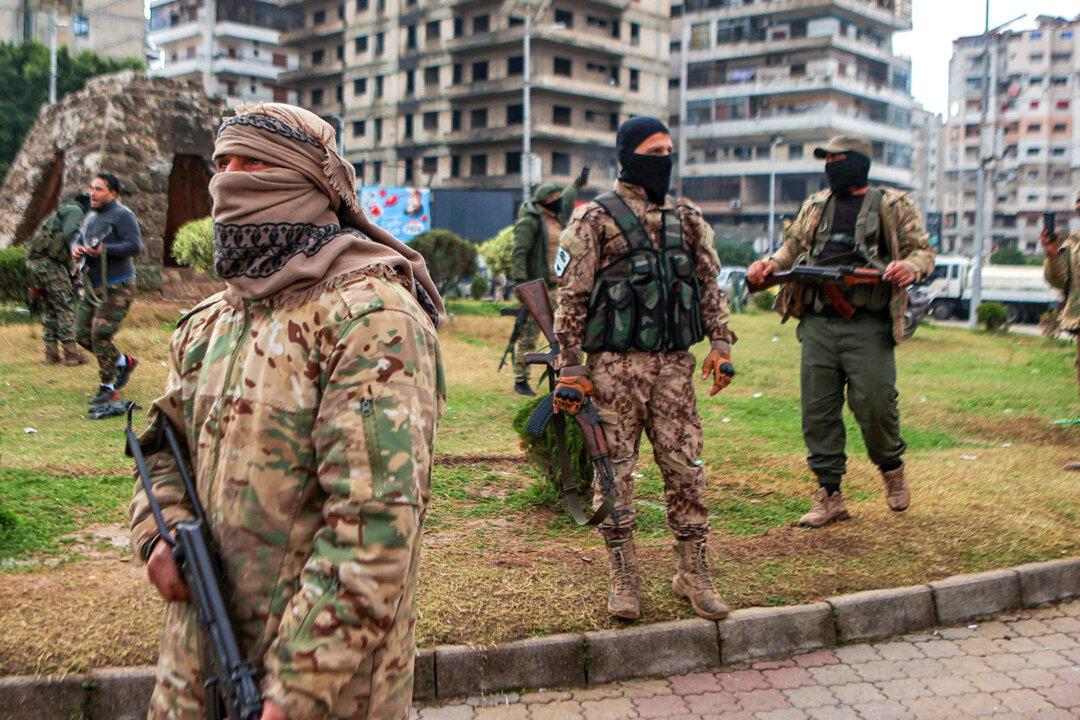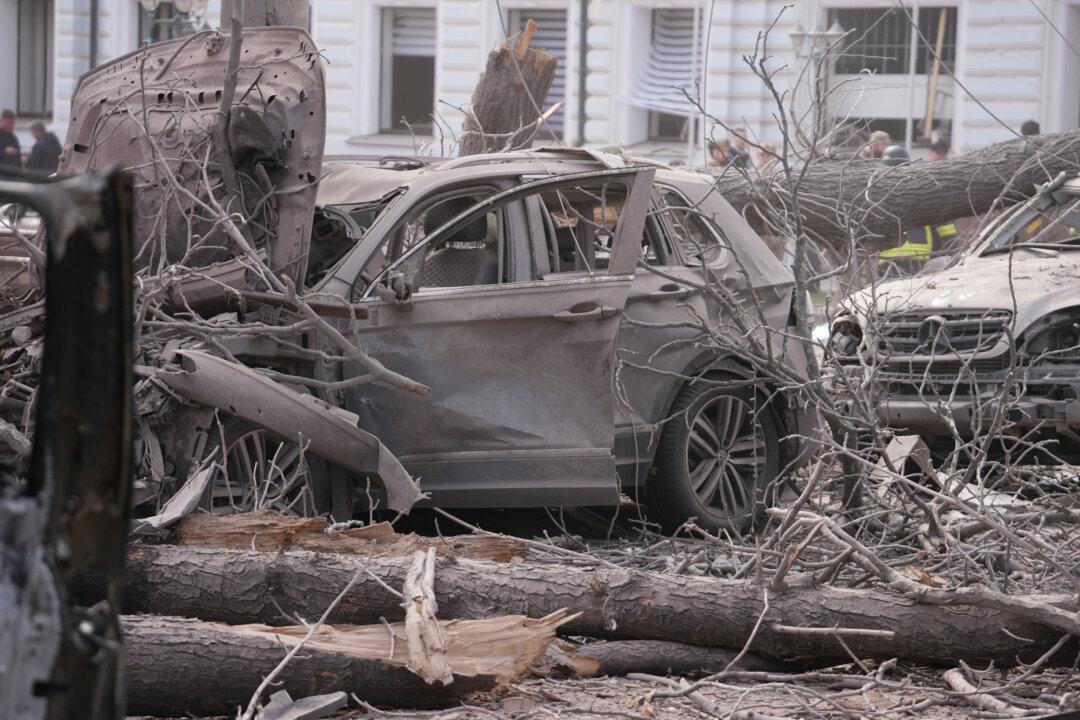Since the regime of Syrian President Bashar al-Assad collapsed in December 2024, reports have surfaced of mounting sectarian violence, especially against Syria’s Alawite community, from which the ousted president’s family hails.
“Some of those groups claim that they are affiliated to the [Syrian] Military Operations Administration.”
The organization attributed the reported attacks to “political and sectarian motivations.”
According to SOHR, which has long tracked rights violations by multiple actors in Syria, extrajudicial killings “based on sectarian affiliations” are mostly being reported in the Homs, Hama, and Latakia provinces.
“These developments are not a surprise,” Aydin Sezer, a prominent Turkish political analyst, told The Epoch Times. “What surprises me is the low number of murders [being reported].
“I believe there are more killings that are not reflected in public discourse and in reports by international organizations.”
In early December 2024, Assad’s regime abruptly collapsed and his national army appeared to disintegrate in the face of a Turkey-backed rebel offensive.
The offensive, during which Assad himself fled to Moscow, was spearheaded by the Hay'at Tahrir al-Sham terrorist group (HTS), a U.S.-designated terrorist group with previous links to the al-Qaeda terrorist group.
Since Assad’s ouster, HTS leader Ahmad al-Sharaa (formerly known as Abu Mohammed al-Golani) has become the de facto ruler of Syria.

Since taking power, HTS, formerly known as the Al-Nusra Front, has sought to distance itself from its earlier ties with al-Qaeda, pledging to safeguard the rights of Syria’s disparate ethnic and religious minorities.
Nevertheless, reports have emerged in recent weeks that Syria’s Alawite community, of which Assad and his ruling circle were members, has been subject to violent reprisals by the country’s new HTS-led leadership.
Until now, such reports—along with unverified video footage—have been largely confined to social media, making them difficult to confirm.
Omer Onhon, who served as Turkey’s ambassador to Damascus from 2009 to 2012, said the reports of attacks, if true, were “very disturbing for the future of Syria.”
“Apparently, there have been some incidents, some attacks,” Onhon told The Epoch Times. “But who is doing them? And why? This is important to know.”
He expressed hope that such attacks were “isolated events” perpetrated by “rogue elements” rather than a policy of retribution “sanctioned by the [new] Syrian government.”
“This is what I would hope because these [attacks] are criminal activities,” Onhon said.
Kevork Almassian, a Syria-born political analyst based in Berlin, likewise called the reports “deeply troubling” but “not entirely surprising given HTS’s ideological roots.”
“HTS, which emerged from al-Qaeda-linked factions, has historically espoused a Salafi-jihadist ideology that views non-Sunni Muslim communities, including Alawites, as heretical or apostate,” Almassian told The Epoch Times.
“This ideological framework has often been used to justify violence against religious minorities, particularly Alawites, who were portrayed as the popular base of the Assad government.”
Alawites, who are thought to account for roughly 10 percent of Syria’s population, espouse a heterodox form of Shiite Islam. Historically, they have been largely concentrated in the coastal provinces of Latakia and Tartus.
According to Almassian, who founded and runs the Syriana Analysis website, HTS’s leadership has “occasionally sought to rebrand itself as a more pragmatic actor focused on [civil] governance.”
“But its actions on the ground often betray a persistent sectarian agenda,” he said.
Sezer said violence against religious minorities is “what is expected” from groups, including HTS, that are ideologically descended from al-Qaeda.
“Besides their ideological and religious obsessions, these groups have the mentality of blaming the Alawite community for the entire Assad regime,” he said.
On Jan. 30, Tulsi Gabbard, U.S. President Donald Trump’s nominee for national intelligence director, leveled similar criticisms against HTS, stressing the group’s past links to violent extremism.
“I shed no tears for the fall of the Assad regime,” Gabbard told the U.S. Senate Select Committee on Intelligence at a contentious confirmation hearing on Jan. 30.
“But today, we have an Islamist extremist who is now in charge of Syria ... who has already begun to persecute and kill and arrest religious minorities, like Christians,” she said, referring to HTS leader al-Sharaa.
However, Gabbard did not provide any evidence to support her assertions.

Sezer said he believes that Syria’s Alawites, rather than Christians, are likely to be the prime targets of sectarian violence because of their affiliation with the long-ruling Assad dynasty.
Syria’s new HTS-led regime, he said, “will be especially careful with Christians, because this would negatively affect its relations with the West.”
Almassian said he is concerned that other minority groups in Syria could also be singled out for abuse, given HTS’s past associations.
HTS Under Fire?
Allegations of sectarian violence have been accompanied by scattered reports of attacks by unknown perpetrators against HTS-led security personnel.At the time, Syria’s HTS-led interior ministry said that 10 other security officers had been injured by what it described as “remnants” of the Assad regime.
The ministry pledged a harsh response against “anyone who dares to undermine Syria’s security or endanger the lives of its citizens,” according to Reuters.
According to the newspaper, the operation followed reports that 13 Alawites had been executed in Homs—presumably those reportedly killed in Fahel—on Jan. 24.
It went on to report, citing HTS sources, that 10 HTS-affiliated security personnel had been killed by “Alawite gunmen” near the coastal city of Jableh.
The Epoch Times could not independently verify any of the claims.

On Jan. 28, Jordan’s Albawaba news portal reported that two car bombs had been detonated near a police station and military checkpoint in the Homs countryside.
Onhon said he was aware of such reports but was unable to confirm them yet.
“We don’t know exactly what’s happening, but apparently there is something [to the reports],” he said, describing the current situation on the ground in Syria as “quite complicated.”
“They say the attacks were committed by elements of the former regime or by villagers who felt they had come under attack.”
Onhon added that after Assad’s regime fell and his army dispersed, many Syrian soldiers simply “went back to their towns and villages.”
“There were many Alawites among them who returned to the Latakia and Tartus area,” he said. “So there are still many remnants of the former army.”
Sezer said he believes more attacks on HTS-led security personnel may be seen in the future, “especially on the Mediterranean coast,” where pro-Assad sentiment is known to be strongest.
“Depending on the success or failure of the HTS leadership, such attacks and armed resistance may continue and even increase,” he said.
“Because of the civil war, all ethnic groups in Syria have weapons and ammunition.”
Almassian described the reports as “credible” but said such attacks on HTS-led personnel “remain scattered and limited in scope.”
“These attacks are best understood as acts of individual or small-group resistance rather than part of a broader, organized movement against HTS rule,” he said.
“There is no evidence to suggest that these actions are part of a coordinated campaign or that they enjoy support from local or regional powers.”
He said he believes that while such attacks “may temporarily disrupt HTS operations or cause casualties, their ability to pose a serious, long-term threat to the group’s control is questionable.”
“Sporadic incidents will likely persist, particularly in areas where resentment toward HTS rule remains high,” Almassian said.
“However, without a unified command structure, external support, or a clear strategy, these actions are unlikely to evolve into a sustained resistance movement.”







